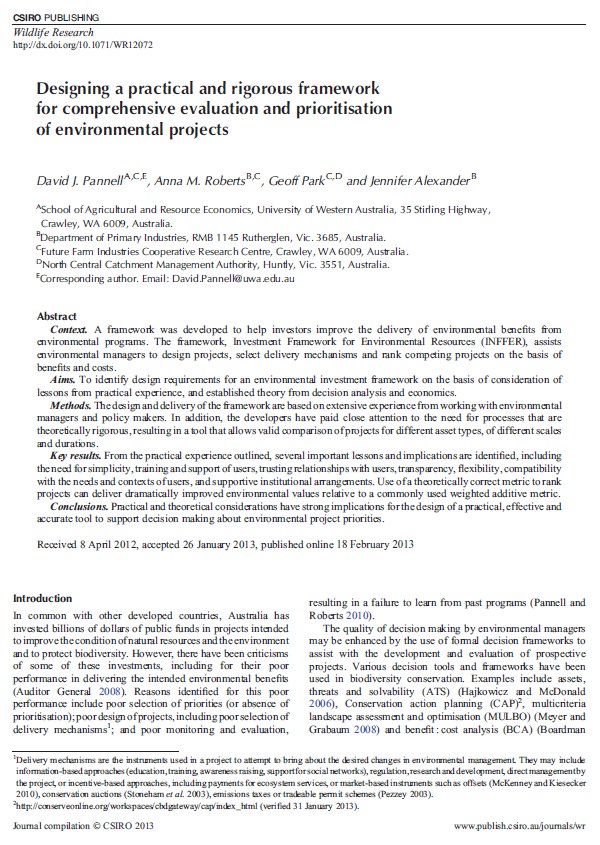Practical and theoretical considerations for design of INFFER
This article presents practical and theoretical considerations underpinning the design of INFFER.
Pannell, D.J., Roberts, A.M., Park, G. and Alexander, J. (2013). Designing a practical and rigorous framework for comprehensive evaluation and prioritisation of environmental projects, Wildlife Research 40(2), 126-133.
Abstract
Context. A framework was developed to help investors improve the delivery of environmental benefits from environmental programs. The framework, INFFER (Investment Framework for Environmental Resources), assists environmental managers to design projects, to select delivery mechanisms, and to rank competing projects on the basis of benefits and costs.
Aims. To identify design requirements for an environmental investment framework based on consideration of lessons from practical experience, and established theory from decision analysis and economics.
Methods. The design and delivery of the framework are based on extensive experience from working with environmental managers and policy makers. In addition, the developers have paid close attention to the need for processes that are theoretically rigorous, resulting in a tool that allows valid comparison of projects for different asset types, of different scales and durations.
Key results. From the practical experience outlined, a number of important lessons and implications are identified, including the need for: simplicity, training and support of users, trusting relationships with users, transparency, flexibility, compatibility with the needs and contexts of users, and supportive institutional arrangements. Use of a theoretically correct metric to rank projects can deliver dramatically improved environmental values relative to a commonly used weighted additive metric.
Conclusions. Practical and theoretical considerations have strong implications for the design of a practical, effective and accurate tool to support decision making about environmental project priorities.
Link to the paper’s page at the journal web site
Pre-publication version of the full paper (679K)
For a copy of the article, email us.


